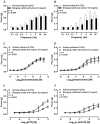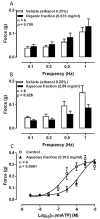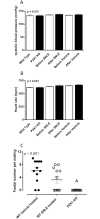Aqueous extracts of Urtica dioica (stinging nettle) leaf contain a P2-purinoceptor antagonist-Implications for male fertility
- PMID:35900970
- PMCID: PMC9333203
- DOI: 10.1371/journal.pone.0271735
Aqueous extracts of Urtica dioica (stinging nettle) leaf contain a P2-purinoceptor antagonist-Implications for male fertility
Abstract
Stinging nettle root and leaf extracts were tested for their effect on prostatic smooth muscle contractility. Root extract did not affect electrical field stimulation induced-nerve mediated contractions of isolated rat prostates. On the other hand, leaf extract attenuated electrical field stimulation-induced contractions at all frequencies. Similarly, contractions elicited by exogenous administration of ATP and αβ-methylene ATP were inhibited by leaf extract, whereas contractions elicited by exogenous administration of noradrenaline or acetylcholine were unaffected. The active component was present within the aqueous phase of the leaf extract. In mouse mating studies, stinging nettle leaf extract (50 mg p.o. daily) reduced male fertility by 53% compared to vehicle-treated male mice. Cardiovascular parameters were unaffected by administration of stinging nettle leaf extract (p ≥ 0.057). Treated mice exhibited normal mating behaviour. Bladder and testes weighed less in stinging nettle leaf extract treated mice. All other organs and total body weight were unaffected. It is concluded that stinging nettle leaf extract reduces contractility of genitourinary smooth muscle by acting as an antagonist at postjunctional P2X1-purinoceptors. These data indicates that blocking sperm transport through pharmacological blockade of P2X1-purinoceptors via oral administration is consistent with an effective and convenient biological strategy male contraception.
Conflict of interest statement
The authors have declared that no competing interests exist.
Figures



References
- Safarinejad M. Urtica dioica for treatment of benign prostatic hyperplasia: A prospective, randomized, double-blind, placebo-controlled, crossover study. J Herbal Pharmacother 2005; 5: 1–11. - PubMed
MeSH terms
Substances
LinkOut - more resources
Full Text Sources
